Geotextiles are a specialized type of fabric. Unlike textiles used in garment manufacturing, they are specifically designed for civil engineering applications, particularly in road construction. So, what exactly are geotextiles? How do their structures compare to regular fabrics? What unique properties make them so indispensable in these specialized applications? Let’s delve into the world of geotextiles with insights shared by Phu Thanh Phat.
What is a Geotextile?
Geotextile Definition
Geotextiles, also known as Engineer Fabric, are permeable fabrics that, when used in conjunction with soil, have the ability to separate, filter, protect, reinforce, and drain. According to Wikipedia, geotextiles find extensive use in various engineering fields such as irrigation, transportation, and environmental projects.
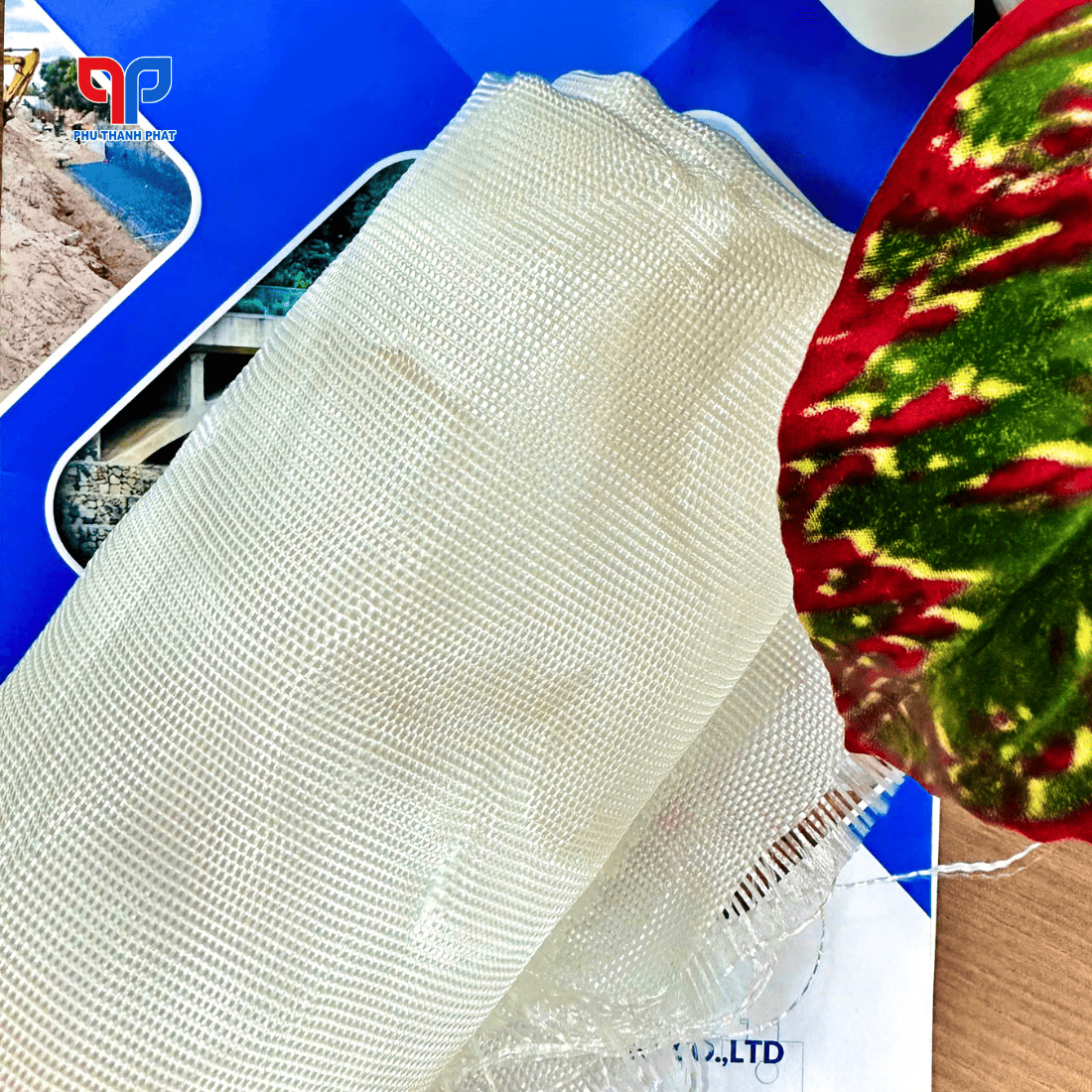
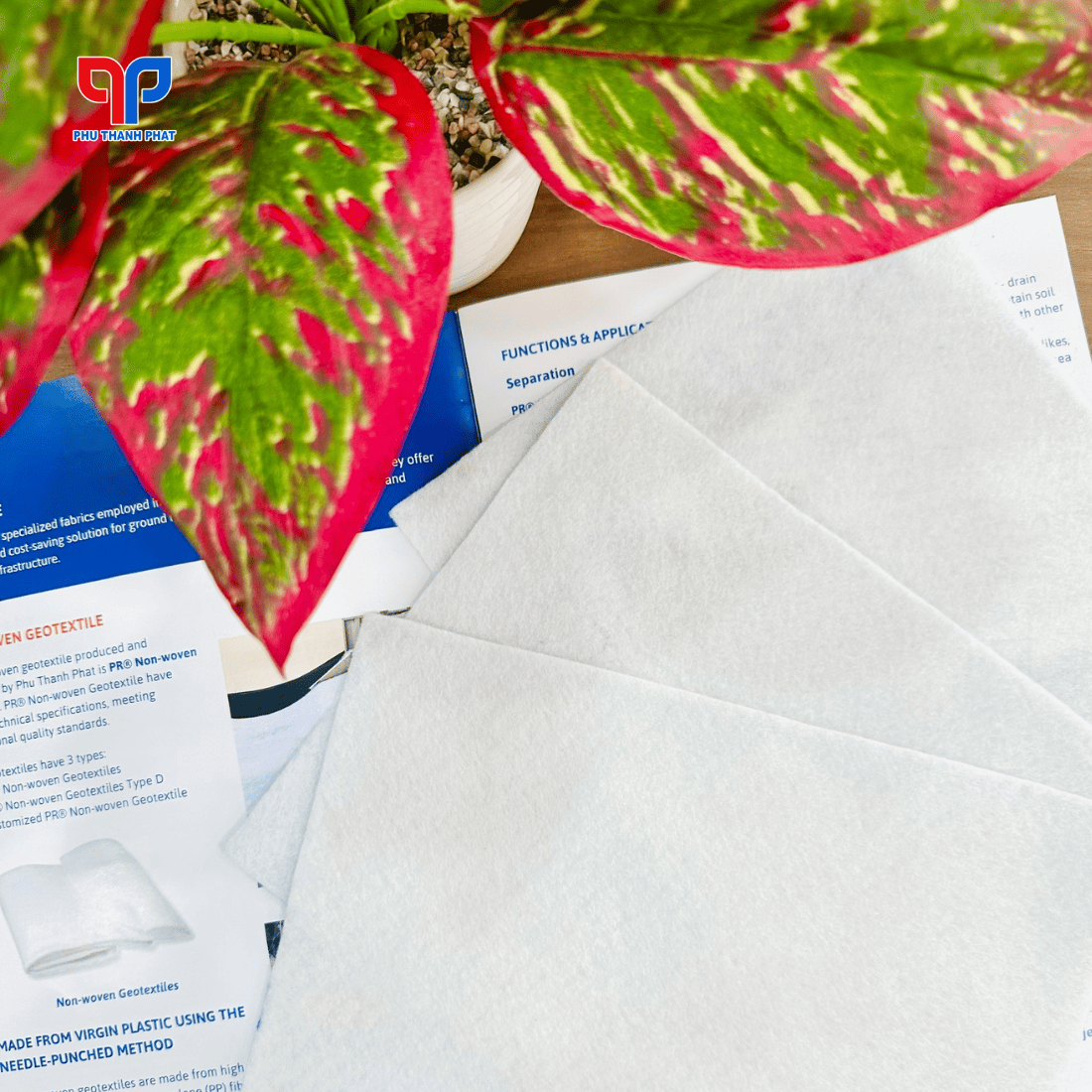
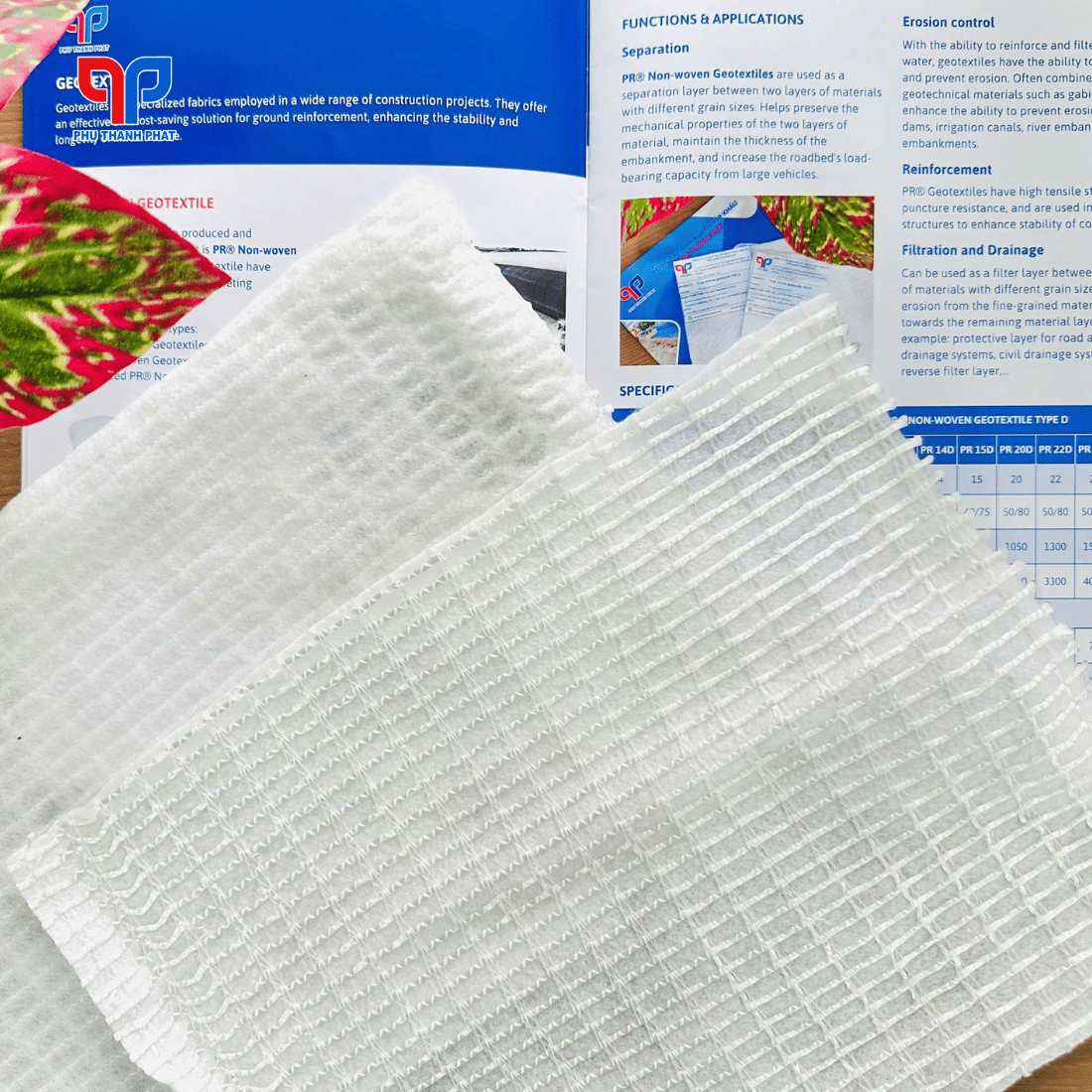
History of Geotextile Development
Origins
Everything has its origins and evolution. So, what are the origins of geotextiles, and when were they introduced to Vietnam?
According to official documents from the Vietnam Institute of Geosciences and Mineral Resources, geotextiles emerged and were first used in the 1950s. However, their significant recognition and documentation began in 1958 with applications in Florida. Initially, geotextiles were used primarily as water filters and separators, aiding in drainage and the filtration of soil and gravel.
Around the same time, RJ Barrett, an American architect, experimented with geotextiles in a small project to reduce erosion of concrete walls and footings, further reinforced with large rocks. However, heavy rainfall caused significant water flow, revealing weaknesses in the footing and compromising the initial structure. Though this was unexpected, it laid the groundwork for geotextile testing and significantly contributed to subsequent research.
The Advent of Nonwoven Geotextiles
In 1968, a French construction materials company researched and developed a new type of geotextile: nonwoven geotextiles. These were used in the construction of a dam in France (1970).
This was a major breakthrough in geotextile research and production, setting a new precedent for geotextile development. To this day, nonwoven geotextiles offer numerous benefits in reinforcing construction projects.
Geotextile Introduction to Vietnam
In Vietnam, geotextiles were first introduced in the 1990s, with significant import and development starting in 2003. Notably, Vietnam produced its first geotextile in 2005, marking a new era for the country’s civil engineering sector.
Some well-known geotextile manufacturers in Vietnam include Aritex, APT, and especially PTP’s PR nonwoven geotextiles.
Geotextile Structure
Geotextiles are made from polymer granules (Polypropylene (PP) and Polyester (PE)) that are drawn into fibers and then woven or needle-punched to form sheets, typically 4 meters wide. The mechanical properties of geotextiles vary based on their structure, including tensile strength, elongation, puncture resistance, and permeability.
Based on fiber structure and manufacturing technology, geotextiles are classified into three main types: woven geotextiles, nonwoven geotextiles, and composite geotextiles.
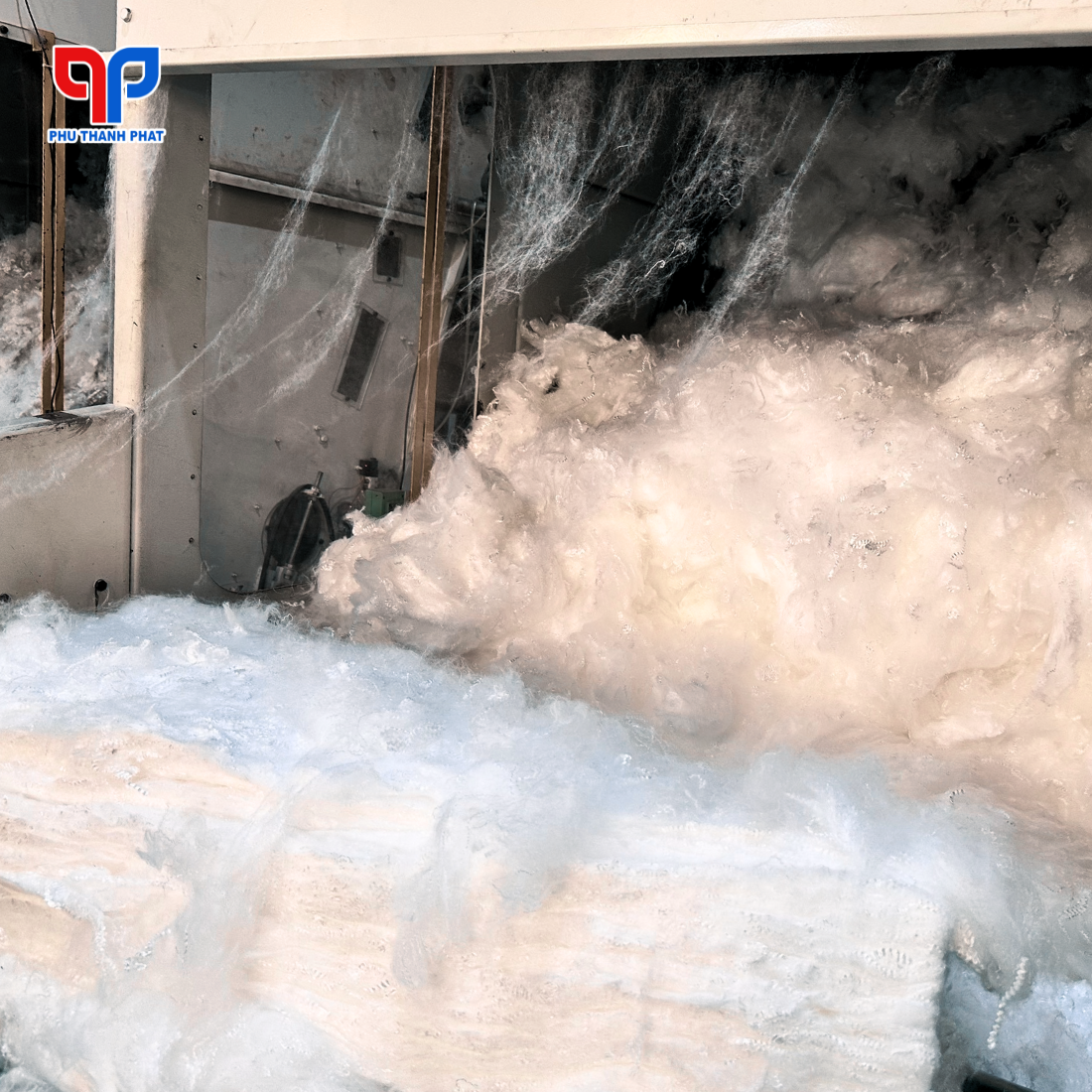
Classification
To serve diverse purposes and optimize performance, geotextiles have evolved into three primary types: woven, nonwoven, and composite.
Woven Geotextiles
Woven geotextiles were the first type developed. Also known as reinforced geotextiles or high-strength woven geotextiles, they are made from woven polymer fibers, resembling conventional textiles. Despite having all the standard geotextile functions (reinforcement, filtration, separation), experts note that their drainage capacity is generally lower than that of nonwoven geotextiles.
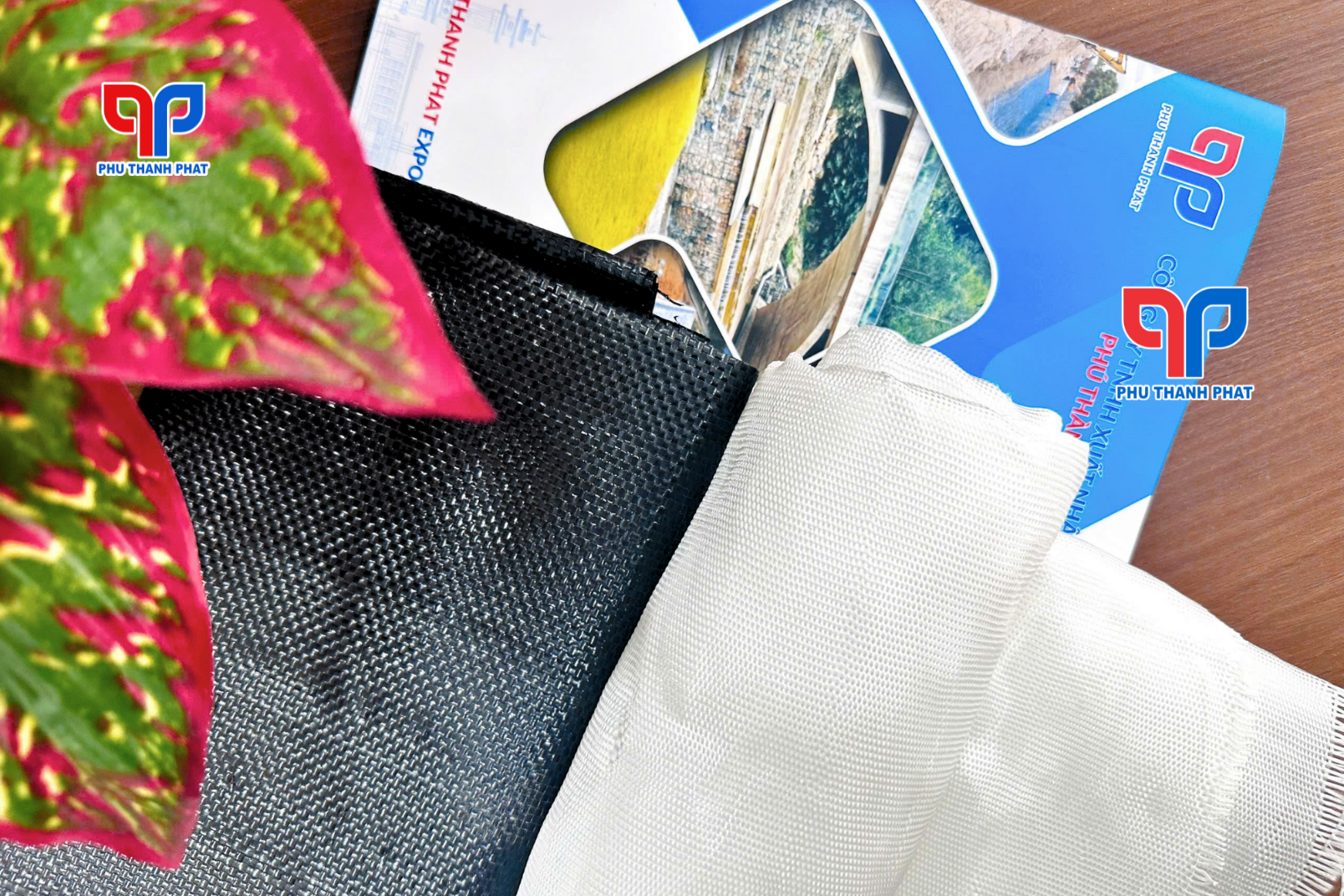
Nonwoven Geotextiles
Nonwoven geotextiles are an improvement on woven geotextiles. Their manufacturing process is simplified through needle punching and heat bonding, resulting in lower costs. Despite this, nonwoven geotextiles offer superior drainage and are more widely used for separation, filtration, and drainage in road and bridge projects in Vietnam.
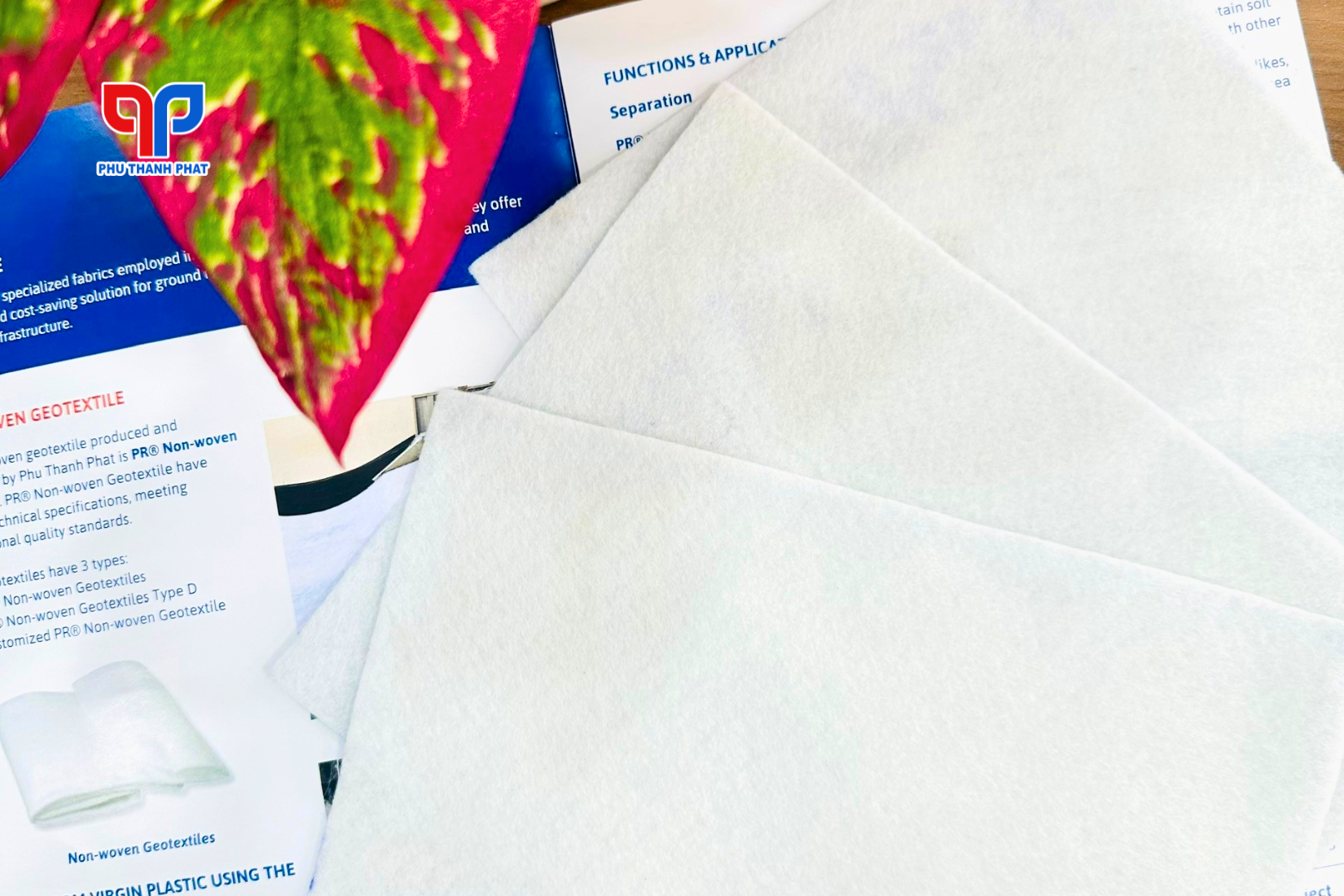
Composite Geotextiles
Composite geotextiles are made by stitching reinforcing fiber bundles (woven geotextiles) onto the surface of nonwoven geotextiles, enhancing both strength and drainage. This is the latest development in geotextile technology, combining the advantages of both woven and nonwoven types. As a result, composite geotextiles are exceptionally robust against external forces, making them suitable for critical transportation projects requiring simultaneous reinforcement.
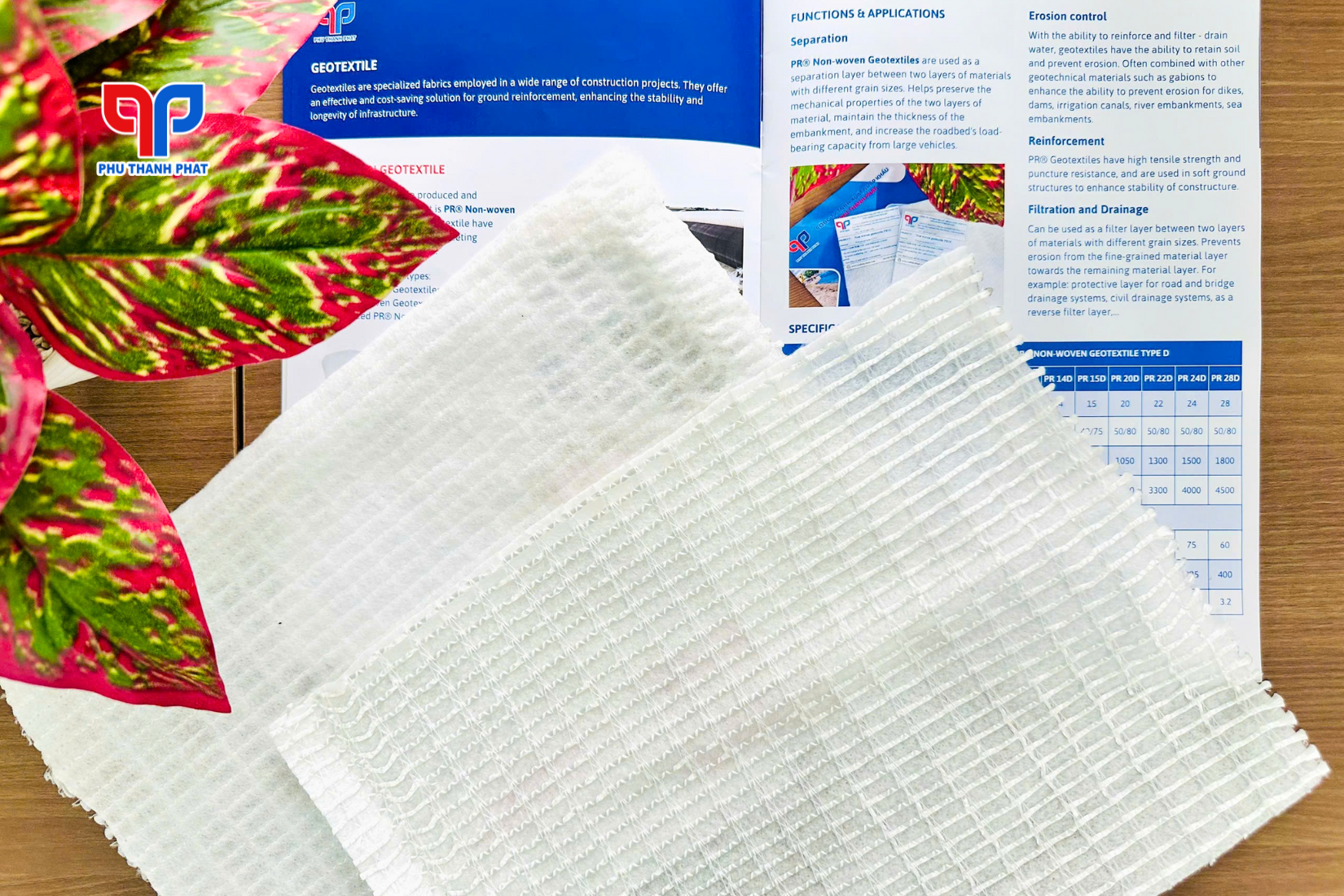
Technical Specifications and Standards
Geotextiles are classified into three types, each with distinct specifications corresponding to their brand and model number. For example:
- PR nonwoven geotextile with 9kN/m tensile strength -> PR9 geotextile
- PR nonwoven geotextile with 12kN/m tensile strength -> PR12 geotextile
- GT woven geotextile with 100kN/50m tensile strength -> GT10 geotextile
- GT woven geotextile with 150kN/50m tensile strength -> GT15 geotextile
- GT woven geotextile with 100kN/100m tensile strength -> GT100 geotextile
- GT woven geotextile with 200kN/200m tensile strength -> GT200 geotextile
specifications
Table 1 – Technical specifications of PR nonwoven geotextile
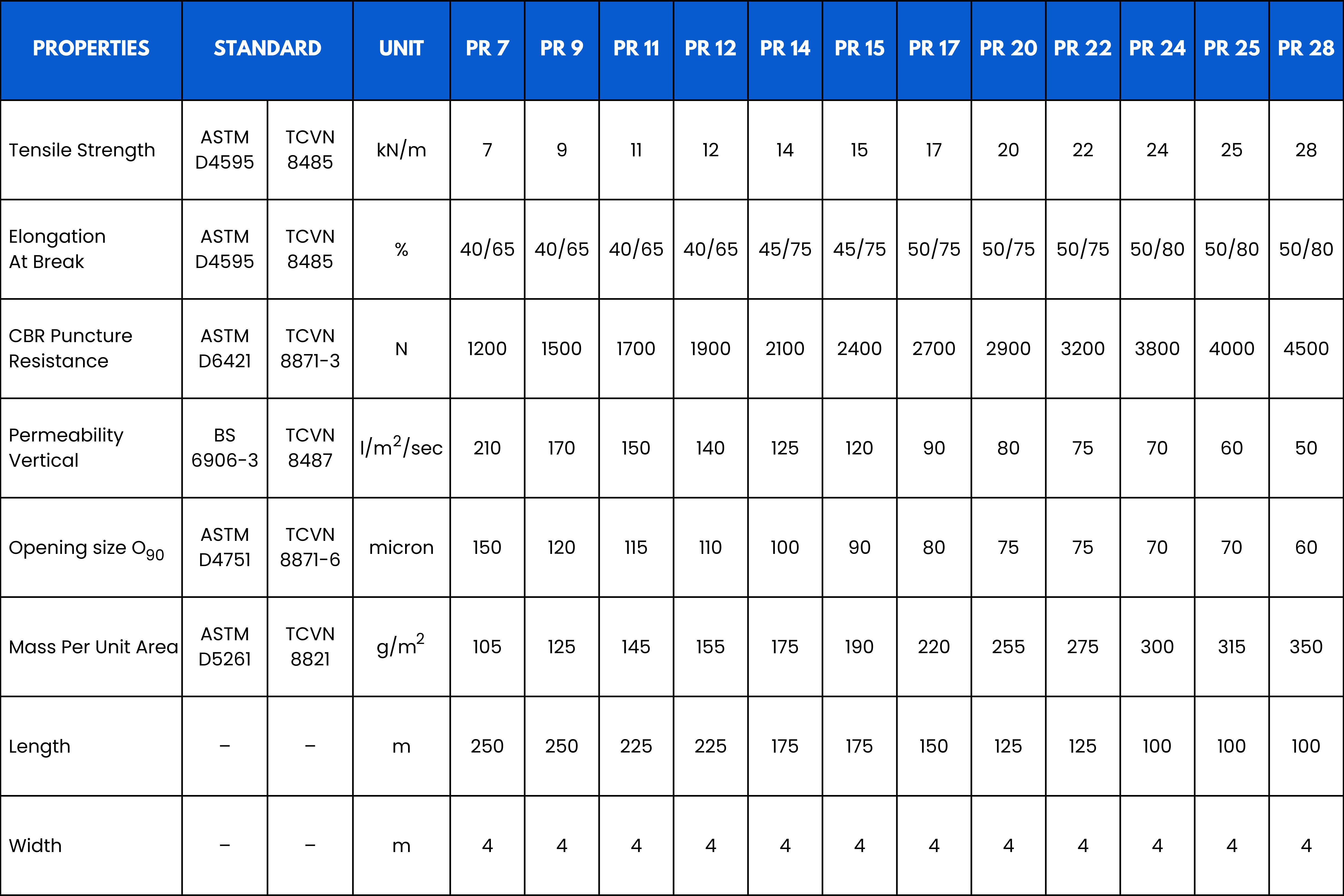
Table 1 – Technical specifications of GT woven geotextile
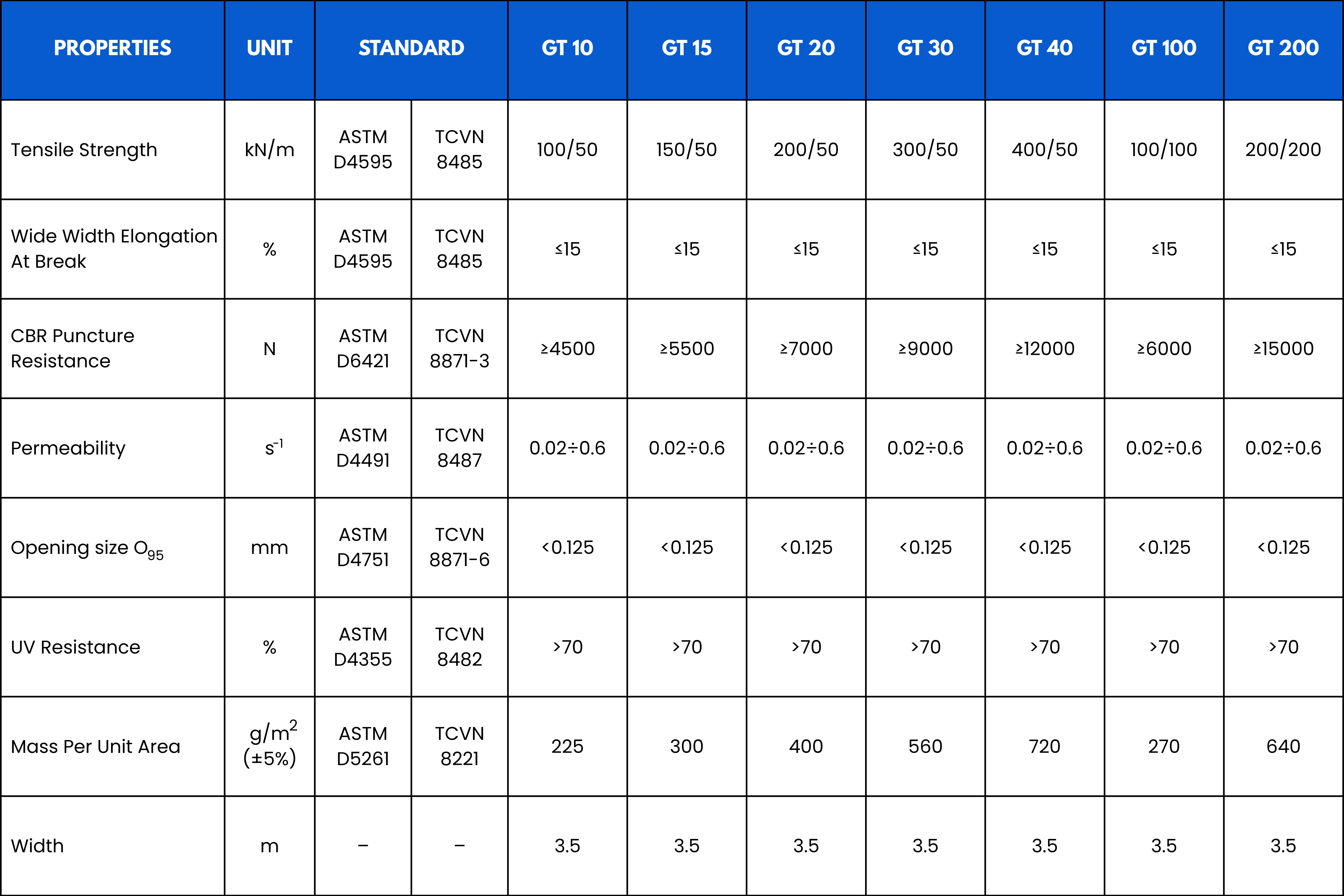
Geotextile Application Functions
Separation
Traditional methods for stabilizing embankments on soft soils involve increasing the embankment thickness to compensate for losses due to settlement. For soils with a CBR < 0.5, losses can exceed 100%. Using geotextiles between soft soil and the roadbed prevents the mixing of two material layers, minimizing embankment losses and significantly reducing construction costs. Additionally, geotextiles prevent soft soil from penetrating the roadbed aggregates, preserving the mechanical properties of the fill material and effectively enhancing load-bearing capacity.
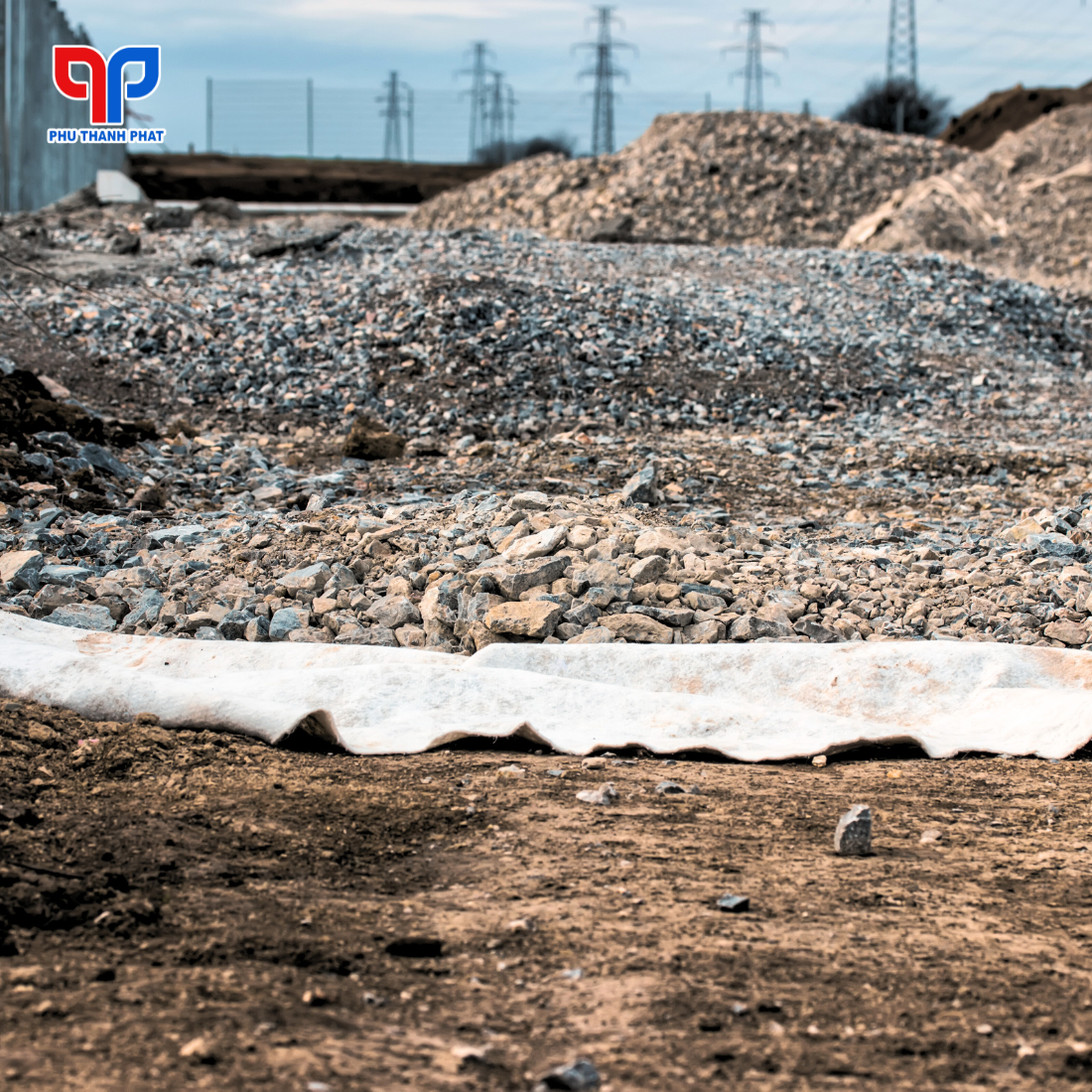
Reinforcement
In practice, under wheel loads, the primary function of geotextiles in roadbeds is separation rather than reinforcement of the structure’s tensile strength.
In the construction of dikes, dams, or bridge approaches with high embankments, slope failures or lateral displacements can occur. Geotextiles act as reinforcement, providing lateral resistance to enhance slope stability.
Drainage/Reverse Filtration
For soft soils with high water content and natural moisture, geotextiles facilitate drainage, maintaining and enhancing the soil’s shear strength and improving overall project stability over time. Nonwoven geotextiles are particularly effective at rapidly dissipating excess pore water pressure during and after construction, thereby increasing the shear strength of soft soils.
Two key standards for evaluating reverse filtration characteristics are soil retention and permeability. Geotextiles must have sufficiently small pores to prevent fine clay particles from passing through, while also allowing adequate water flow to dissipate pore water pressure quickly.
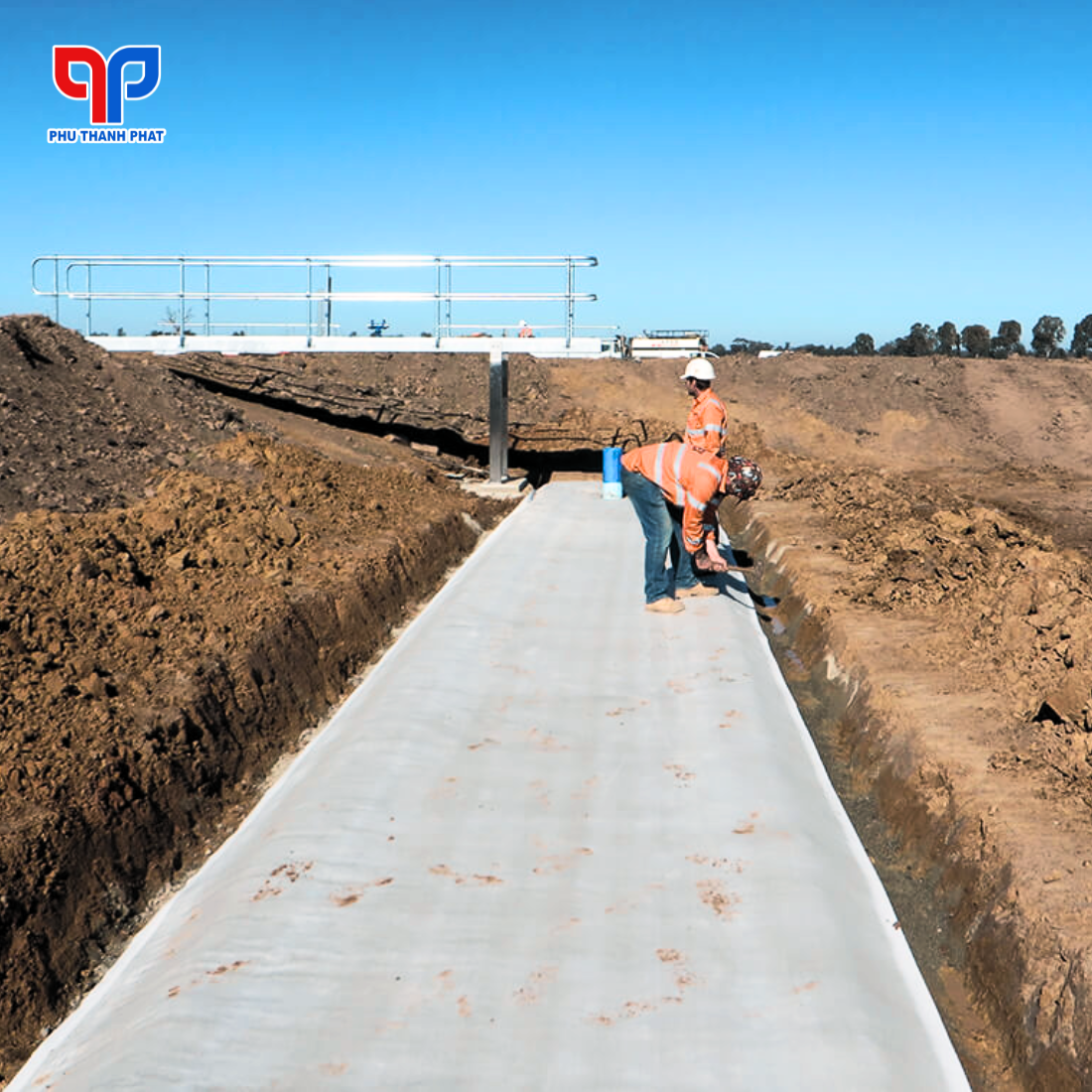
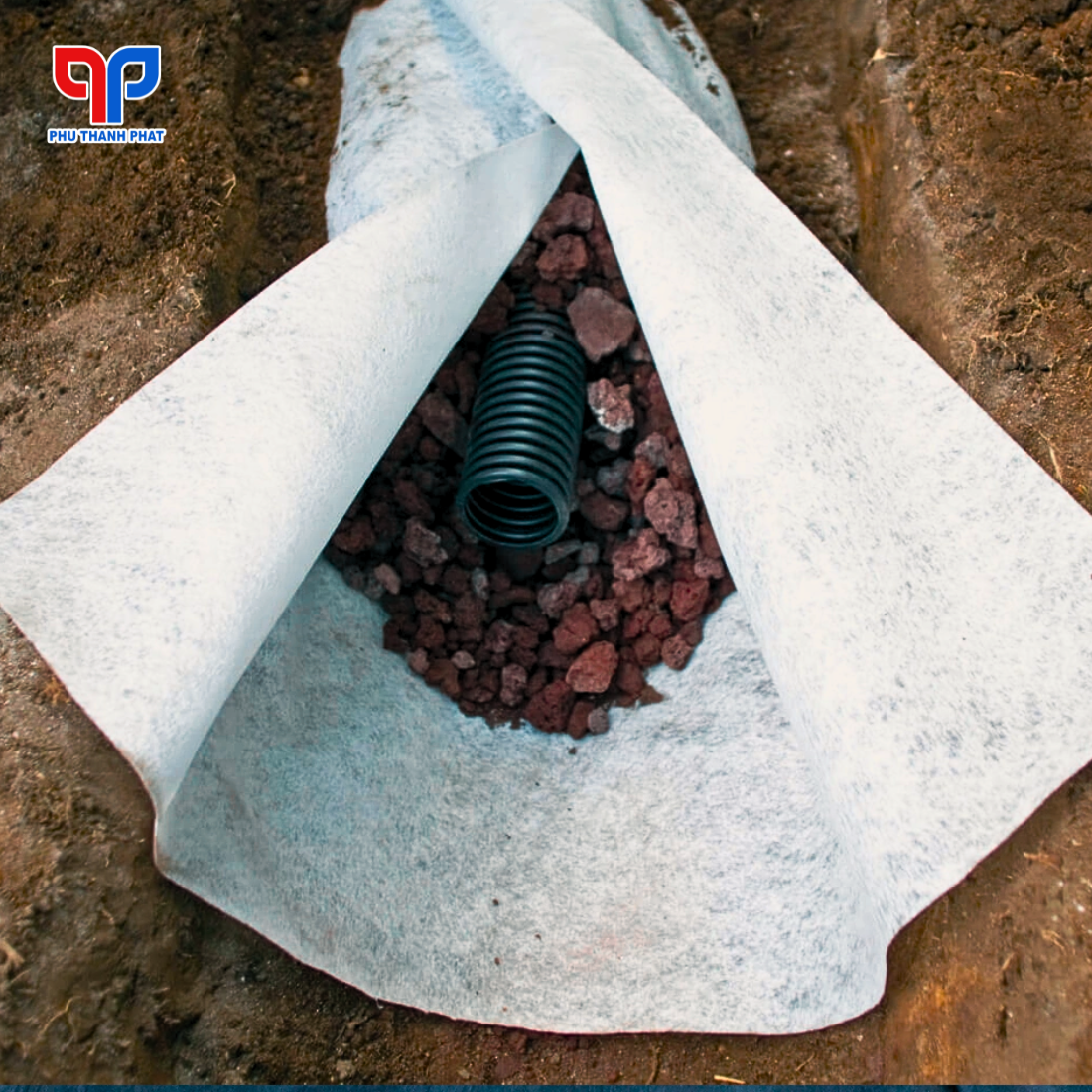
Conclusion
Geotextiles are essential geotechnical materials, particularly in the construction sector. For more information or to receive the latest quotes, please leave your contact details or contact Phu Thanh Phat directly. We will promptly provide you with quotes and information.
CONTACT INFORMATION
Head Office: 15 Street 5, Vinh Loc Residential Area, Binh Hung Hoa B Ward, Binh Tan District, Ho Chi Minh City
Hotline: 028.666.03482 – 0909.452.039 – 0903.877.809
Email: info@vaidiakythuat.com
